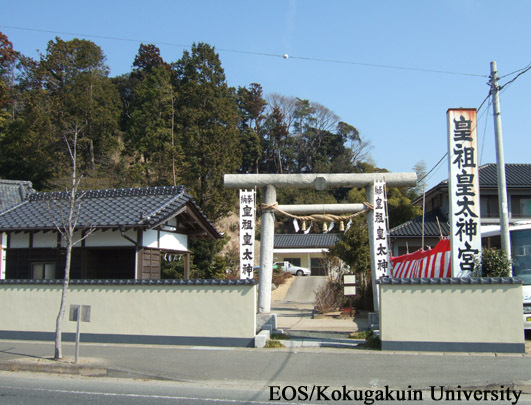- トップ
- Encyclopedia of Shinto
- Kōso Kōtai Jingū Amatsukyō
Encyclopedia of Shinto
| Main Menu: | |
| Links: |
詳細表示 (Complete Article)
| カテゴリー1: | 8. Schools, Groups, and Personalities |
|---|---|
| カテゴリー2: | Modern Sectarian Groups |
| Title | Kōso Kōtai Jingū Amatsukyō |
| Text | A This is a Shinto-derived new religion established by Takeuchi Kiyomaro (also read Ōmaro) (1874-1965). The Takeuchi family, which was from Shinmei Village in the Nei district of Toyama Pprefecture, had in its possession an ancient text known as the "‘Takeuchi document'" (Takeuchi monjo) which recorded the lineages of deities (kami) reaching back into ancient times and the traditions of the ancient dynasty of the Imperial court prior to the era of Emperor Jimmu, together with antique objects called "sacred treasures" (shinpō). In 1892 Takeuchi went to Tokyo carrying these objects with him. He became a member of Ontakekyō and in it studied Shinto doctrines and rituals and received guidance on deciphering the ancient text that had been handed down in his family. In this period he twice went to Mount Kurama in Kyoto to perform austerities, and, in 1900, visited Isohara in Ibaraki Pprefecture in order to carry out proselytizsing activities, set up Ontakekyōs Amatsu religious centerre there, and worshipped at the Kōso Kōtai Shrine. According to Takeuchi, this shrine, the Kōso Kōtai Shrine, had been built by an Eemperor in ancient times, and he proclaimed that successive generations of the Takeuchi family had served this shrine as priests (shinkan); he secretly allowed others to view his "sacred treasures," and as a result, he attracted followers, particularly from among the military and those who adhered to Imperial way (kōdō) thought. It is reported that at the beginning of the Sho$wa era (i.e., around 1926) he had assembled over 10,000 followers, mostly in the Tokyo area. In 1930, however, the police prohibited the use of figures that resembled the chrysanthemum crest (which was associated with the imperial house), and banned the public display of "sacred treasures." In 1933 Kuyomaru was punished a second time for this crime, and in 1936, because his thought and activities were beginning to influence advocates of national polity (kokutai) and religious figures of the era, he and senior officials of his movement were arrested on suspicion of lèse majesté. His shrine building was totally razed and some 4,000 documents, as well as sacred treasures, were seized. He was still facing trial in court when Japan met defeat in World War II. In 1947 Takeuchi revived the movement under the name Dainichikyō, but the movement was ordered to disband in 1950 because of its advocacy of ultranationalism. In 1952 the movement (maybe add: reformed and …) was registered in its present name as a religious legal person under the Religious Corporations Law. Takeuchi died in 1965 and his son Yoshimiya took his place and remains the present leader. Headquarters: Ibaraki Pprefecture Nominal membership: Unknown (S) —Yumiyama Tatsuya |




